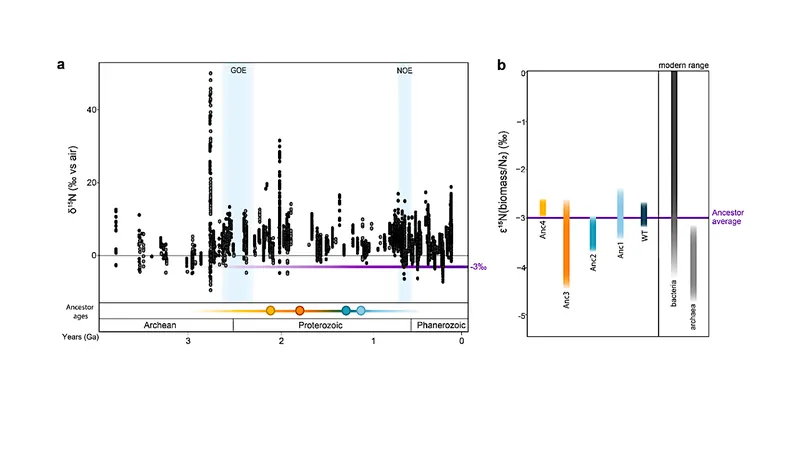
Unlocking the Secrets of Earth's Ancient Nitrogen Cycle: 2 Billion Years in the Making!
2025-06-28
Author: Siti
The Enigmatic Role of Nitrogen Isotopes in Earth's History
For over two billion years, nitrogen isotopes have held the key to understanding biological activity on early Earth. The fractionation of nitrogen isotopes, referred to as δ15N, found in sedimentary rocks, hints at the development of biological nitrogen fixation—a crucial process for early life and Earth’s primary productivity.
Exploring the Evolution of Nitrogenase
Sure, we know nitrogenase is vital for converting atmospheric nitrogen (N2) into usable ammonia, but how has its evolution shaped the isotope signatures we see today? This mystery remains at the forefront of scientific inquiry.
A Journey Through Time: Engineering Ancestral Genes
In a groundbreaking study, researchers have reconstructed and experimentally examined a library of synthetic ancestral nitrogenase genes, traversing an astonishing 2 billion years of evolutionary milestones. By engineering contemporary microbes to express these ancient forms of nitrogenase, scientists aimed to unravel how past environments influenced modern isotopic signatures.
Stunning Findings on Nitrogenase Stability
The results reveal that all engineered strains exhibit δ15N values clustered closely around those of modern microbes. This striking similarity indicates that the Mo-dependent nitrogenase has remained remarkably consistent throughout its evolutionary history, from its inception to the present.
Implications for Astrobiology and Beyond
These findings not only enhance our understanding of nitrogen cycles in Earth's past but also solidify nitrogen isotope biosignatures as vital clues in the ongoing search for life beyond our planet. Scientists can now leverage this knowledge to identify potential biosignatures in extraterrestrial environments!
A New Era for Astrobiological Research
With the stability of nitrogenase isotopes confirmed, the way forward in astrobiology is clearer than ever. The persistent nitrogen signatures offer a promising framework for exploring the origins of life, both on Earth and across the cosmos.





 Brasil (PT)
Brasil (PT)
 Canada (EN)
Canada (EN)
 Chile (ES)
Chile (ES)
 Česko (CS)
Česko (CS)
 대한민국 (KO)
대한민국 (KO)
 España (ES)
España (ES)
 France (FR)
France (FR)
 Hong Kong (EN)
Hong Kong (EN)
 Italia (IT)
Italia (IT)
 日本 (JA)
日本 (JA)
 Magyarország (HU)
Magyarország (HU)
 Norge (NO)
Norge (NO)
 Polska (PL)
Polska (PL)
 Schweiz (DE)
Schweiz (DE)
 Singapore (EN)
Singapore (EN)
 Sverige (SV)
Sverige (SV)
 Suomi (FI)
Suomi (FI)
 Türkiye (TR)
Türkiye (TR)
 الإمارات العربية المتحدة (AR)
الإمارات العربية المتحدة (AR)